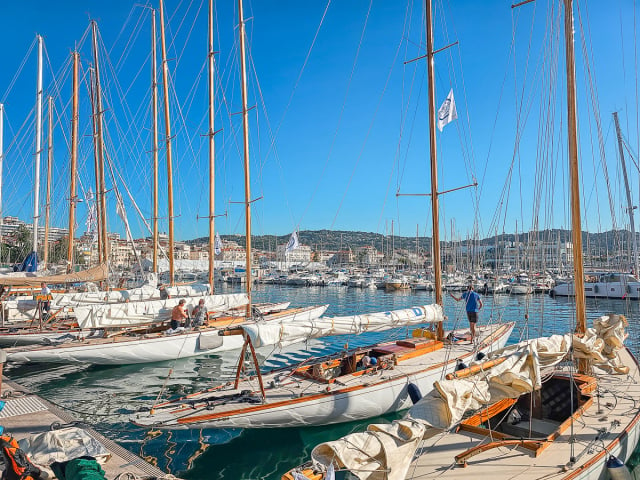Recreational boating is an activity that offers a unique connection with nature, the sea and the freedom that being on the water provides. With a wide variety of boats available, from small canoes to luxurious yachts, there are options to suit all tastes and needs. However, each type of vessel has its own characteristics and legal requirements. This article will guide you through the different types of recreational boats and inform you about boats that require a boating permit.
Types of pleasure boats
1. Sailboats
Sailboats are one of the most classic and romantic ways to sail. They use wind as the main means of propulsion and are classified according to the number of hulls and type of rig.
Classification by number of helmets:
- Monohull : The most common type of sailboat, with a single hull. They are known for their agility and are ideal for both recreational and competitive boating.
- Catamaran : Boat with two parallel hulls, known for its stability and speed. They are popular for both recreational boating and sporting events.
- Trimaran : With three hulls, these sailboats are extremely stable and fast, ideal for long voyages and competition.
Classification by type of rig:
- Sloop : A single mast with a mainsail and a headsail. It is the most common and versatile tackle.
- Ketch : Two masts, one main and a smaller mizzen behind. Offers more sail configuration options.
- Yawl : Similar to the ketch but with the mizzen mast smaller and located behind the rudder.
- Schooner : Two or more masts, with the foremast shorter than the main mast.
2. Motorboats
Motorboats are boats powered by engines, which can be internal or external. They are versatile and suitable for a variety of water activities.
Types of motorboats
- Speedboats : Designed for speed, they are popular in water sports and competitions.
- Fishing boats : Equipped with tools and space to store fishing equipment, they are ideal for fishing enthusiasts.
- Day cruisers : Designed for day trips, with basic amenities on board such as comfortable seats, a small kitchen and bathroom.
- Pontoon boats : With a flat platform on floats, they are ideal for recreational outings on lakes and rivers.
3. Motor yachts
Motor yachts represent luxury and sophistication in recreational boating. They are large vessels and are equipped with high-level amenities.
Motor yacht classification:
- Day yachts : Ideal for day trips, with enough amenities for a small group of people.
- Sport yachts : They combine luxury with sporty performance, perfect for those looking for speed and style.
- Flybridge yachts : With an elevated bridge that provides better views and additional space for socializing.
- Megayachts : Boats over 24 meters in length, equipped with luxurious facilities such as swimming pools, gyms, helipads, and more. They usually require a professional crew.
4. Kayaks and canoes
These light boats are propelled by oars and are perfect for exploring rivers, lakes and coastal areas. They offer an up-close and personal experience with water.
Types of kayaks and canoes
- Recreational kayaks : Generally closed at the top, they are ideal for one or two people. They are stable and easy to handle.
- Sea kayaks : Designed for open water, they are longer and narrower, with watertight storage compartments.
- Canoes : Open at the top, generally wider and more stable than kayaks. They are ideal for family outings and light cargo transportation.
5. Rowing boats
Rowing vessels, such as dinghies and skiffs, are propelled by human power using oars. They are popular in sports such as competitive rowing and for recreational activities in still waters.
Types of rowing boats:
- Rowing boats : Used for both recreation and transportation over short distances. They are stable and easy to handle.
- Skiffs : Light, fast boats, used mainly in rowing competitions.
- Gondolas : Traditional from Venice, they are propelled by a stand-up paddler using a long oar.
6. Jet skis
Jet skis are small motorized boats, designed for one or two people. They are very popular in tourist areas for their speed and maneuverability.
- Jet Skis : Known for their ability to make quick turns and maneuvers, they are ideal for those seeking excitement and speed on the water.
- WaveRunners : Similar to jet skis, but with a focus on stability and comfort for longer rides.
Vessels that require a navigation permit
Most countries have specific regulations that require certain vessels to obtain a navigation permit. This is due to the need to ensure safety on the water and compliance with maritime regulations.
1. Sailboats
- Permit : Generally, sailboats over 6 meters in length require a navigation permit.
- Navigation license : In many cases, boaters must obtain a license that certifies their ability to operate the boat, such as the PER (Patron of Recreational Boats) in Spain.
2. Motorboats
- Permit : Motorboats, regardless of size, typically require a boating permit. This includes speed boats and fishing boats.
- Skipper's license : Operators must have a license that validates their ability to operate the boat and knowledge of safety regulations. In Spain, for example, the PNB (Basic Navigation Pattern) title is necessary for boats up to 8 meters.
3. Motor yachts
- Permit : All motor yachts require a sailing permit, due to their size and power.
- Captain's License : Yacht captains must have a professional license, which varies depending on the size and type of yacht. In many countries, a license such as the PER, PY (Yacht Skipper) or CY (Yacht Captain) is required.
4. Jet skis
- Permit : Jet skis also require a boating permit.
- Driver's license : Drivers must obtain a specific license to operate jet skis, such as the Navigation License in Spain.
5. Commercial and passenger vessels
Any vessel used for commercial purposes or to transport passengers requires a special permit and must comply with strict safety regulations. This includes commercial fishing boats, ferries, and tour boats.
6. Rowing boats and kayaks
- Permit : In most cases, kayaks and canoes do not require a boating permit. However, it is advisable to check local regulations, as in some areas there may be specific restrictions.
General requirements for obtaining permits
Obtaining a boating permit generally involves:
1. Vessel registration
The vessel must be registered in the corresponding maritime registry of the country. This registration ensures that the boat meets safety standards and allows the owner to be identified.
2. Boat insurance
It is mandatory to take out insurance that covers damages to third parties and accidents. This insurance protects both the owner and other water users in the event of incidents.
3. Technical inspection
The boat must pass a technical inspection that verifies its good condition and the safety equipment on board. This inspection is carried out periodically to ensure that the vessel continues to meet the requirements.
4. Operator training
The boat operator must complete training and safety courses and obtain the appropriate license.


